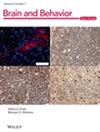Functional Near-Infrared Spectroscopy Signal as a Potential Biomarker for White Matter Hyperintensity Progression in Patients With Subcortical Vascular Cognitive Impairment: A Pilot Study
Abstract
Background
White matter hyperintensities (WMH) are a common cause of subcortical vascular cognitive impairment (SVCI). The silent yet progressive nature of WMH in cognitive decline underscores the need for reliable biomarkers for early detection and monitoring of its progression. This study aims to investigate the association between functional near-infrared spectroscopy (fNIRS) signals during mental and physical activities and WMH volume. Additionally, it explores the relationship between fNIRS signals and WMH progression.
Material and Methods:
We recruited 27 patients with mild cognitive impairment (MCI) presenting WMH clinical characteristics. Data from fNIRS and MRI scans were collected during their first visit. Ten of them underwent fNIRS and MRI scans in a second visit two years later. WMH volume analysis used volBrain lesionBrain 1.0 (https://www.volbrain.net). ROC curve analysis was applied to the normalized WMH volume to determine a cut-off value for distinguishing between the subcortical vascular MCI (svMCI) and amnestic MCI (aMCI) groups. We compared fNIRS data during cognitive tests and physical activities between svMCI and aMCI groups at the first visit and in the two-year follow-up.
Results
While cognitive profiles were similar between groups, svMCI patients showed significantly reduced fNIRS signals, particularly in the left orbitofrontal cortex (OFC) during verbal fluency tasks (P = 0.005), with further reductions in the left dorsolateral prefrontal cortex (P = 0.049), left OFC (P = 0.012), and right OFC (P = 0.02) over two years. Baseline WMH volume correlated negatively with fNIRS signals during the Stroop test (r = -0.837, P = 0.005). Changes in WMH volume over two years correlated positively with changes in fNIRS signals in the right ventrolateral prefrontal cortex during memory tasks (r = 0.886, P = 0.033) and left OFC during balance tasks (r = 0.786, P = 0.028).
Conclusion
Our results suggest that fNIRS signals have the potential to serve as biomarkers for WMH progression.


 求助内容:
求助内容: 应助结果提醒方式:
应助结果提醒方式:


